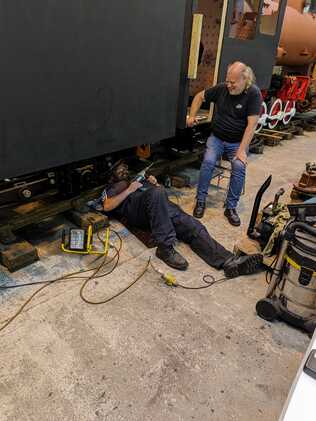C2 PROJECT
C2 Photo Album
album:July_2023
Pictures from the gauging run
We lent our C2 Project flat waggon to Boston Lodge for the week for storing and moving bags of coal for the strategic coal reserve. This allowed us to borrow Ffestiniog Railway waggon number 63 for the week to form part of our gauging train. - Andrew Nelms
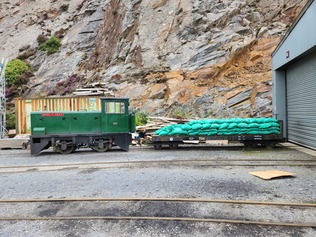
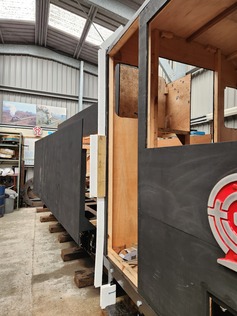
Polystyrene strips added to the cab size to prove the clearance of the cab to line side structures. - Andrew Nelms
The loco front crash beam has been re-fitted to the front buffer beam for the gauging run. - Andrew Nelms
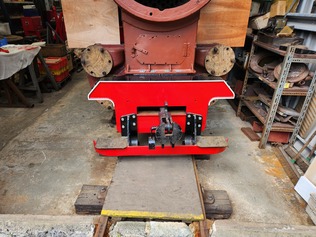
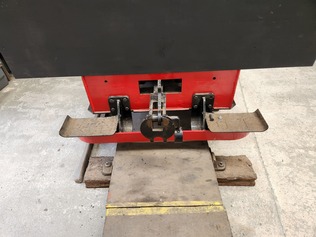
The tender rear crash beam has been re-fitted to the rear buffer beam for the gauging run. - Andrew Nelms
Helen and Matt learning how to prepare the Ffestiniog Railway locomotive "Upnor Castle" for service ready for the gauging runs. - Andrew Nelms
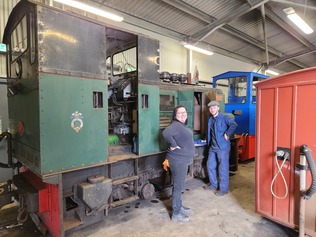
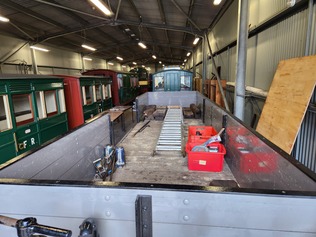
Loading Waggon 63 with tools and equipment for the gauging run. - Andrew Nelms
James assembling the tender brake gear on 19 road pit. - Andrew Nelms
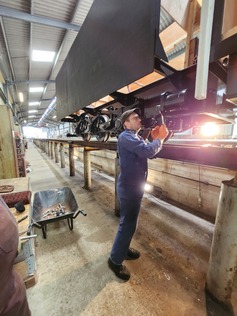
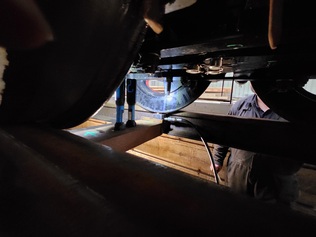
Photo showing the hydraulic load cell positioned under a tender wheelset for weighing the locomotive. - Andrew Nelms
Weighing the locomotive with the hydraulic load cells on 19 road pit. - Andrew Nelms
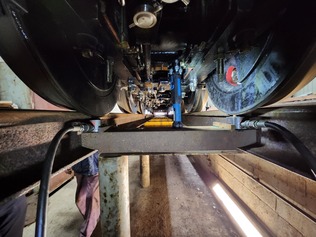
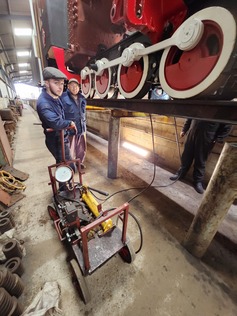
Matt and Dave2 with the hydraulic package for weighing the loco and tender with the load cells. - Andrew Nelms
C2 locomotive passing over Penrhyn Crossing on its gauging run. - Andrew Nelms
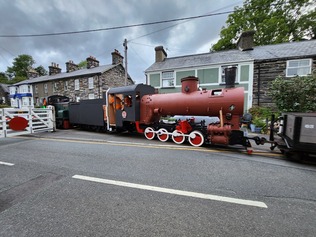
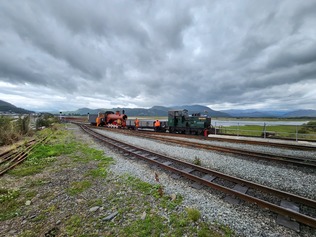
Upnor Castle, waggon 63 and the C2 ready to depart Boston Lodge for the gauging run. - Andrew Nelms
This view shows the clearance of the C2 cab in Garnedd Tunnel. - Andrew Nelms
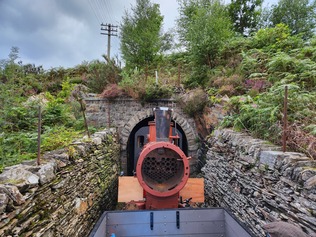
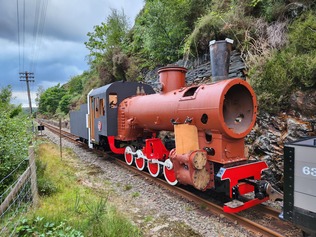
The C2 ready to be pulled into Garnedd Tunnel to measure the clearances. - Andrew Nelms
Reverser and Drain Cock linkages test fitted. - Andrew Nelms
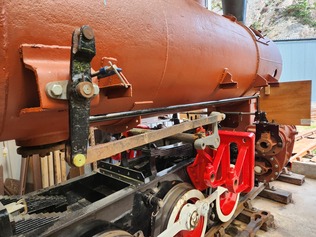
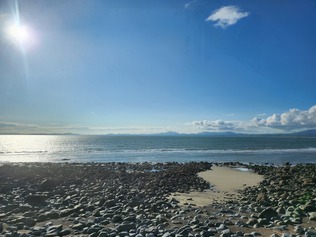
A trip down the coast to Barmouth at the end of the week for some celebratory drinks with the Boston Lodge full time staff. This view is taken from the Cambrian Coast train looking up towards the Llyn Peninsular. - Andrew Nelms
The weighing equipment positioned under a tender wheelset. Matt is poised with a feeler gauge to check when the wheel lifts, while Andrew pumps the hydraulic pump.
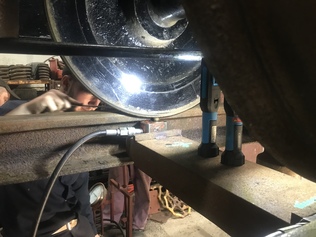
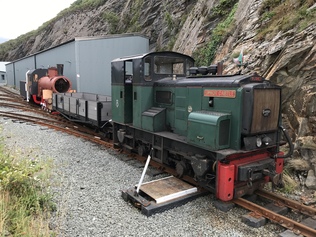
The gauging train formed up at Boston Lodge, ready for the trial runs.
A tight spot for the driver's side footstep, near Minffordd.
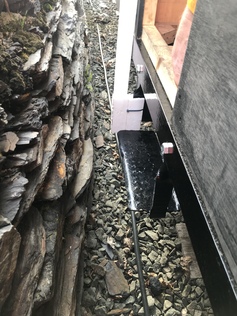
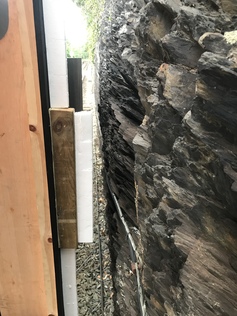
The fireman's side cab handrail close to the wall at Penrhyn.
Andrew measures footstep clearances above Penrhyn.

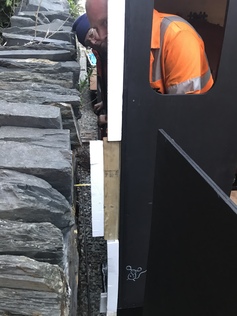
Daves 1 and 2 check the clearances to a stone wall below Penrhyn.
Passing clearances at Minffordd, showing clearance to the grab rail of a heritage carriage.
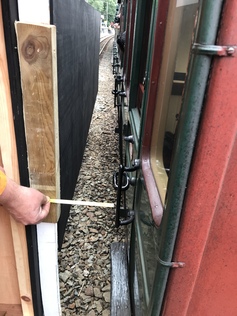
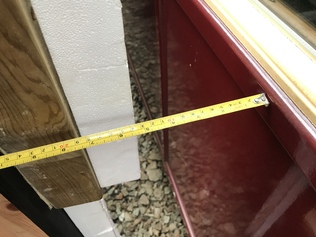
Passing clearances at Minffordd, showing clearance to the beading of a modern carriage.
The tightest spot for lateral clearances was just above Rhiw Goch. We think the wall is slightly closer to the track than it should be at this point.
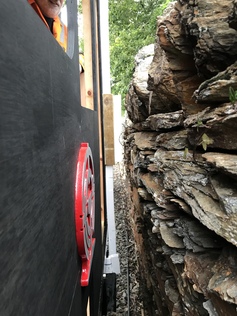
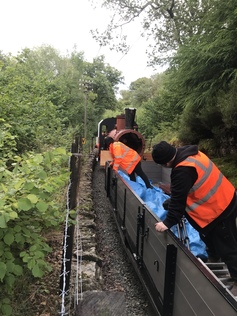
Checking clearances to the cab step while passing through the woods.
Arrival at Tan-y-Bwlch for a short break and some cakes to keep us going - thanks to Isabel!
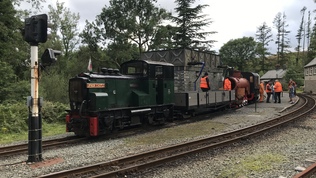
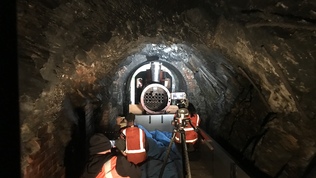
The C2 enters the bottom end portal of Garnedd Tunnel.
After the first passage through Garnedd tunnel, the C2 emerges from the top end portal with all its polystyrene intact. Success!
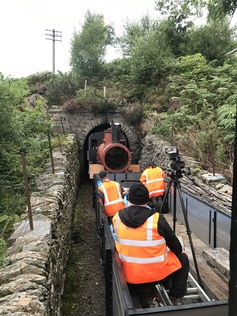
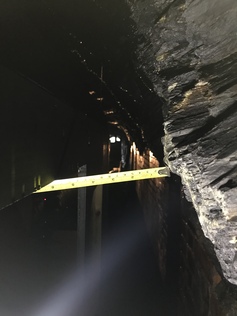
The tunnel portals are generally the tightest parts but there are a couple of protruding rocks inside the tunnel and we also checked clearances to these. At this location Paul checked the opportunities for emergency evacuation and was able to get out of the cab doorways and walk alongside the loco on both sides. When the tender is complete, an alternative evacuation route will be over the coal bunker.
The tunnel portals are generally the tightest parts but there are a couple of protruding rocks inside the tunnel and we also checked clearances to these.
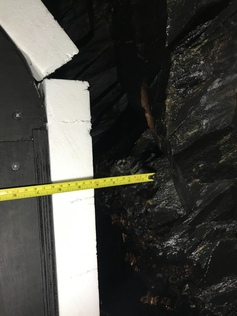
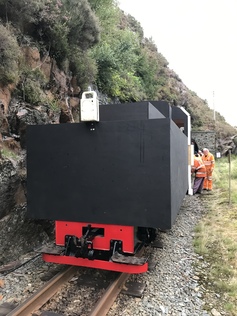
After completion of the tunnel gauging tests, we mounted an electric headlight to the temporary lamp bracket on the back of the tender, to help us propel the C2 safely back down the line at dusk.
At the late June working party, Paul pauses during the awkward job of drilling holes in the tender frame, while Dave 'supervises'!
